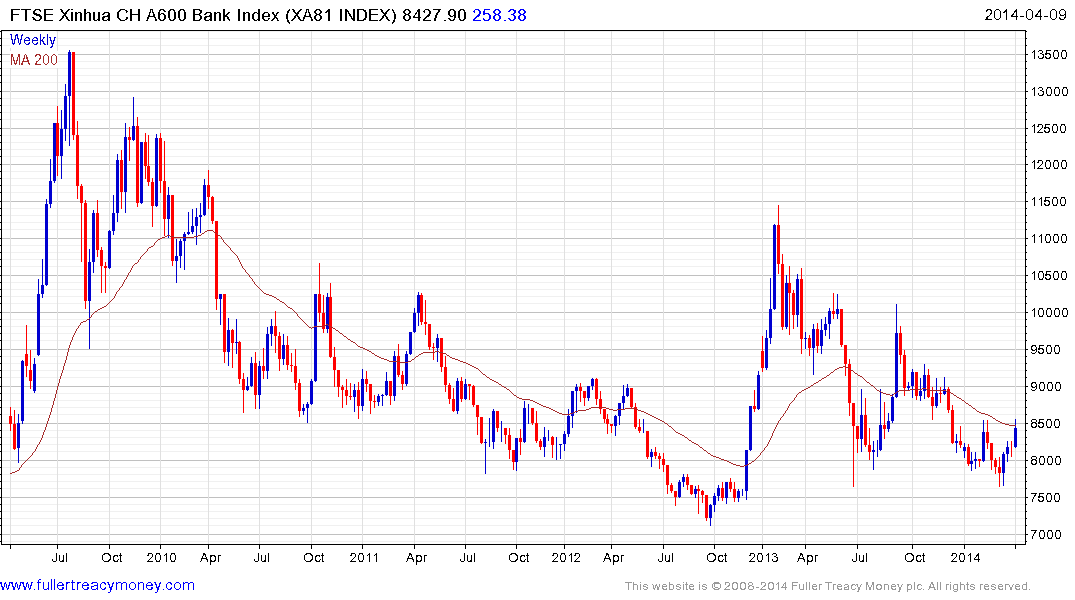Chinese Banks
Thanks to a subscriber for this interesting report from Deutsche Bank which may be of interest to subscribers. Here is a section:
We undertook two proprietary studies, on 2,400 Chinese corporate bond issuers and 13,000 collective trust products, and identified credit risks worth Rmb237bn for these two markets, with listed banks exposed to 37% of these risks. Despite setting aside excess provisions of Rmb819bn, their valuation prices in NPLs of Rmb2.8tr. We expect the sentiment on Chinese banks to reverse after the end of the repayment peaks of the corporate bonds and trust products this May/June, when the market realizes that the actual default rates are materially lower than expected and a gradual rise in default rate is the usual path towards correct pricing of credit and an efficient capital allocation.
Quantifying the expected default rate of the corporate bond market
Our proprietary study on 2,400 Chinese corporate bond issuers, with a combined issuance of 5,500 bonds, identifies 88 issuers facing suspension risks due to P&L losses in 2012 and 1H13 with 74 of them being SOEs that are unlikely to default. This leaves 14 privately owned entities (POEs) as higher risk bond issuers, in addition to the 8 POEs downgraded and on the negative watch list, with a combined issuance of Rmb28.6bn, or 39bps of the total outstanding corporate bonds, which reached Rmb7.4tr in February 2014. Around 65% of these loss-making issuers are involved in the overcapacity sector, namely steel (34%), mining (20%), metal (9%) and solar (2%), in terms of issuance size.
Here is a link to the full report.
Chinese banks have among the lowest P/Es and highest yields in the world. The reason they continue to trade at such attractive valuations is because investors do not feel sufficiently informed with regard to their non performing loans to commit capital. This reports offers a number of insights into the schedule of potential defaults which helps improve our knowledge of the situation. If you are interested in China, this report is well worth reading.
The peaking in the pace of new US home foreclosures acted as a positive catalyst for the banking sector and the property market more generally not least because investors looked on it as a barometer of the depth of the housing crisis. Chinese default rates are likely to be viewed along similar lines since the extent to which the banks have provisioned for this outcome has been the key determinant in how the market has priced their shares.

The FTSE Xinhua A600 Banks Index continues to hold above 7500 and a sustained move below that level would be required to question base formation development.
Back to top


